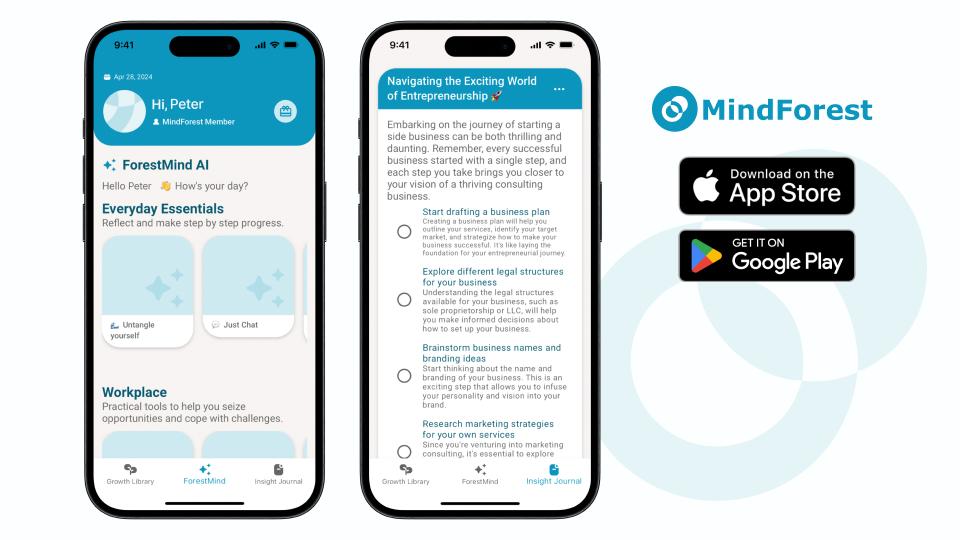
Ghosting and Avoidant Behaviour: Why We Pull Away and 3 Ways to Heal from It
Have you ever experienced ghosting? The two of you were chatting happily the night before, and the next day the person suddenly disappears, never replying again?
Have you ever experienced, emotional blackmail from toxic people? Many of us may have gone through this difficult situation.

Have you ever experienced, emotional blackmail from toxic people? Many of us may have gone through this difficult situation. Here is an example:
Sarah, a dedicated employee, often sacrifices her time to handle extra tasks. Her manager, Mark, frequently uses emotional blackmail to exploit her commitment. One evening, just as Sarah is preparing to leave for her son's school play, Mark approaches her with an urgent project. "If you don't stay late to finish this," he says, "our team will miss the deadline, and everyone will suffer. I thought you cared about our success." Feeling immense guilt and fearing she’ll let her colleagues down, Sarah cancels her plans and stays late. Mark’s manipulation relies on her sense of obligation and fear of disappointing the team, making it challenging for her to set healthy boundaries.
Emotional blackmail became popular after appearing in psychologist Susan Forward's book "Emotional Blackmail: When the People in Your Life Use Fear, Obligation, and Guilt to Manipulate You." She defines it as a repetitive and influential form of emotional manipulation where toxic people invoke the victim's fear, obligation, and guilt to threaten them with punishment or abandonment if they fail to meet the blackmailer's demands (Forward & Frazier, 1997). Forward also outlines a six-step cycle involved in emotional blackmail:
After reading the example, you might wonder, "The blackmailer I encountered doesn't use the guilt card, so are they still emotionally blackmailing me?" Different toxic people have their own forms of emotional blackmail. Forward categorises blackmailers into four types:
While emotional blackmail became popular after 1997, it existed long before that. Karnani and Zelman (2019) analysed emotional blackmail in romantic relationships, comparing it with related concepts and personality traits.
In conclusion, emotional blackmail by toxic people is closely related to other psychological concepts.
Now we know how toxic people use our fear, obligation, and guilt to meet their demands. We might also recognise red flags in our interpersonal relationships and scenarios. However, it's important to distinguish when others' demands are reasonable. For example, if you've been neglecting everything to play video games for a month and your mother asks you to turn off the computer and threatens to give it away, her motive is to get your life back on track, and you have ignored her requests. This is a reasonable demand.
Additionally, does this mean the blackmailer should solely bear all the blame in a toxic relationship? As the saying goes, "It takes two to tango." If we protect ourselves, distinguish between love, rightful responsibility, and excessive demands, and set boundaries that we firmly defend, we can prevent toxic people from using emotional blackmail or manipulation to enter our lives.
Dealing with emotional blackmail and toxic people requires strategies and self-awareness. MindForest is your essential digital tool, designed to guide you through this process with personalised support. Here’s how MindForest can help you manage emotional blackmail and toxic people:
1) AI Coach for Identifying Toxic Behaviours: Utilise the AI coach to recognise and understand toxic behaviours. By analysing your interactions and patterns, the AI coach provides customised advice to help you identify emotional blackmail and toxic people in your life, empowering you to take appropriate action.
2) Insight Journal for Reflecting on Emotional Experiences: The Insight Journal feature documents your emotional experiences and challenges through your conversation with AI, fostering a deeper understanding of your interactions with toxic people, helping you recognise patterns of emotional blackmail and develop strategies to protect your emotional well-being.
3) Goal-setting for Establishing Healthy Boundaries: Set and review achievable goals establish healthy boundaries, paving the way for healthier relationships and personal growth.

Download MindForest now to navigate your emotional well-being, leveraging tailored guidance to deal with emotional blackmail and toxic people effectively.
References
Forward, S., & Frazier, D. (1997). Emotional blackmail. Bantam.
Gottman, J., Gottman, J. M., & Silver, N. (1995). Why marriages succeed or fail: And how you can make yours last. Simon and Schuster.
Karnani, S. R., & Zelman, D. C. (2019). Measurement of emotional blackmail in couple relationships in Hong Kong. Couple and Family Psychology: Research and Practice, 8(3), 165–180. https://doi.org/10.1037/cfp0000126
Hann-Morrison, D. (2012). Maternal Enmeshment. SAGE Open, 2(4), 215824401247011. https://doi.org/10.1177/2158244012470115
Lammers, M., Ritchie, J., & Robertson, N. (2005). Women’s Experience of Emotional Abuse in Intimate Relationships. Journal of Emotional Abuse, 5(1), 29–64. https://doi.org/10.1300/j135v05n01_02
O’Campo, P., Smylie, J., Minh, A., Omand, M., & Cyriac, A. (2015). Conceptualizing acts and behaviours that comprise intimate partner violence: A concept map. Health Expectations, 18, 1968– 1981. http://dx.doi.org/10.1111/hex.12291
Discover practical psychology tips you can apply to your everyday life. From building resilience to improving relationships and finding work-life balance, our blog brings expert-backed insights that help you grow.

Have you ever experienced ghosting? The two of you were chatting happily the night before, and the next day the person suddenly disappears, never replying again?

This article breaks down the psychology of nonchalance, signs of a nonchalant dater, the debate nonchalant vs chalant, and what truly matters when forming modern relationships.

Have you ever felt so intensely drawn to someone that you couldn’t stop thinking about them—imagining every possible interaction, decoding every message, overanalysing every glance? If so, you may not be experiencing love, but something more specific: limerence.
Download MindForest and turn these insights into action. Get personalized support from ForestMind AI Coach, track your progress, and unlock your full potential.